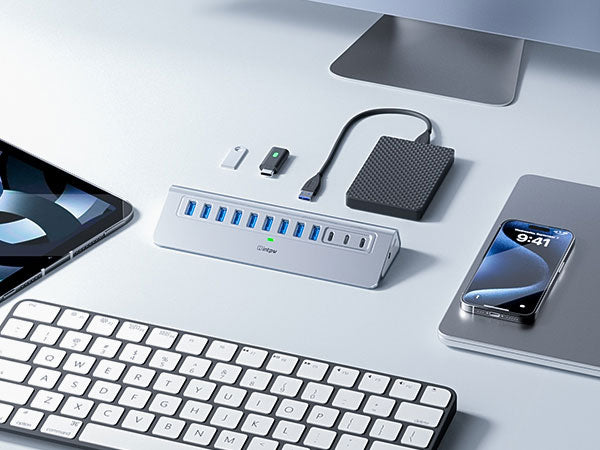
USB-C vs Thunderbolt: When Ports Collide in the Connectivity Arena
, by USintpw, 2 min reading time

, by USintpw, 2 min reading time
The year is 2025. You’re staring at your sleek new laptop, clutching a cable that promises to connect everything—except your sanity. Is this USB-C? Thunderbolt? Why won’t the 8K monitor wake up? Let’s end the confusion.
USB-C isn’t just a hole in your device—it’s a revolution. With its reversible design (no more fumbling!), this 24-pin connector has dethroned USB-A and HDMI in modern gadgets. From smartphones to gaming laptops, USB-C unifies charging, data transfers, and even video output under one roof.
Not all USB-C ports are equal. A USB 3.2 Gen 2x2 port rockets to 20 Gbps—ideal for transferring 4K footage—while older USB 2.0 variants crawl at 480 Mbps. Pair it with USB Power Delivery (PD), and you’ll juice up a MacBook Pro faster than you can say “battery anxiety”.
Pro Tip: Need to hook a USB-C to HDMI and VGA adapter to that ancient projector? USB-C’s DisplayPort Alt Mode makes it work—no voodoo required.
Thunderbolt isn’t just fast; it’s blistering. Co-developed with Apple, Thunderbolt 4 cranks out 40 Gbps—enough to daisy-chain two 4K monitors while backing up a 100GB video project. It’s the secret sauce for creatives editing 8K raw footage or gamers running external GPUs.
While USB-C dabbles in versatility, Thunderbolt 4 dominates with PCIe support and 32Gbps dedicated data lanes. Translation: Your NVMe SSD won’t bottleneck. But beware—Thunderbolt cables cost 3x more than USB-C ones.
Real-World Hack: A docking station with power supply (like CalDigit TS4) turns your laptop into a desktop powerhouse—charging, dual monitors, and 10G Ethernet through one cable.
USB4 (USB-C): 40 Gbps (theoretical max)
Thunderbolt 4: 40 Gbps (32Gbps reserved for data)
Thunderbolt 5: Rumored 80 Gbps (2025 leak)
USB-C PD maxes at 240W—enough for workstations. Thunderbolt 4? A modest 100W. But here’s the kicker: Thunderbolt docks can power monitors and laptops simultaneously.
A 10-port USB hub costs 50.AThunderbolt4equivalent?300+. For most offices, USB 3.2 hubs strike the sweet spot.
USB4 2.0 (2024) doubles bandwidth to 80 Gbps, while Thunderbolt 5 adds dynamic bandwidth switching for 8K/120Hz gaming. But adoption is slow—stick with Thunderbolt 4 for now.
Need to use a USB-C hub with VGA and HDMI? Prioritize hubs supporting dual 4K@60Hz and 100W passthrough charging. Brands like INTPW deliver without breaking budgets.
Choose USB-C If:
You need budget-friendly charging/data solutions.
Your workflow involves basic USB hub data transfers or HDMI/VGA adapters.
Go Thunderbolt If:
You edit 8K video or use external GPUs.
Future-proofing matters (Thunderbolt 5 devices are coming).
Still torn? Grab a USB-C vs Thunderbolt 4 hybrid dock. It’s like having a sports car and minivan in one garage.

Subscribe to our emails